Simulation Standard Technical Journal
A Journal for Process and Device Engineers
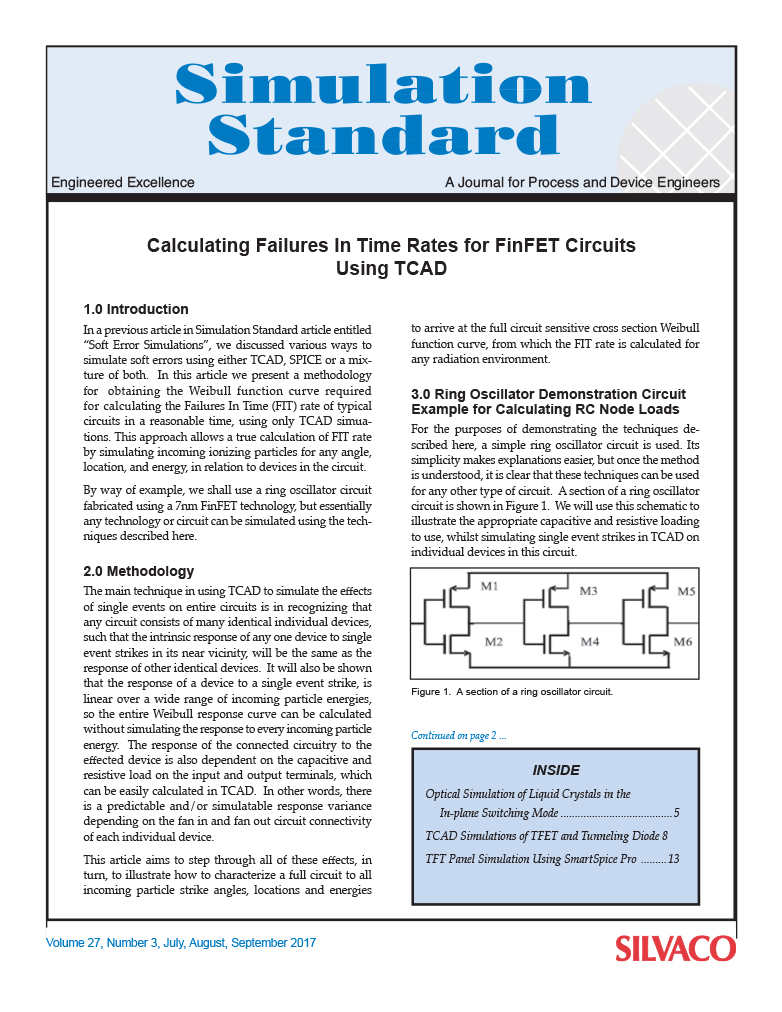
Calculating Failures In Time Rates for FinFET Circuits Using TCAD
In a previous article in Simulation Standard article entitled “Soft Error Simulations”, we discussed various ways to simulate soft errors using either TCAD, SPICE or a mixture of both. In this article we present a methodology for obtaining the Weibull function curve required for calculating the Failures In Time (FIT) rate of typical circuits in a reasonable time, using only TCAD simuations. This approach allows a true calculation of FIT rate by simulating incoming ionizing particles for any angle, location, and energy, in relation to devices in the circuit.
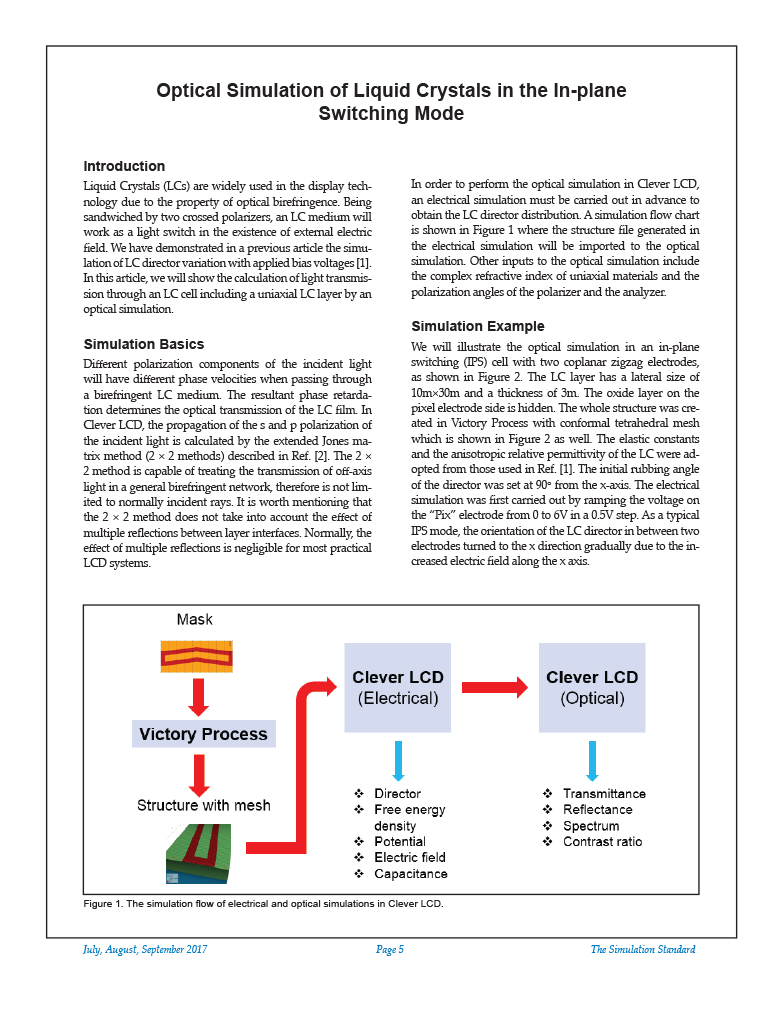
Optical Simulation of Liquid Crystals in the In-plane Switching Mode
Liquid Crystals (LCs) are widely used in the display technology due to the property of optical birefringence. Being sandwiched by two crossed polarizers, an LC medium will work as a light switch in the existence of external electric field. We have demonstrated in a previous article the simulation of LC director variation with applied bias voltages [1]. In this article, we will show the calculation of light transmission through an LC cell including a uniaxial LC layer by an optical simulation.
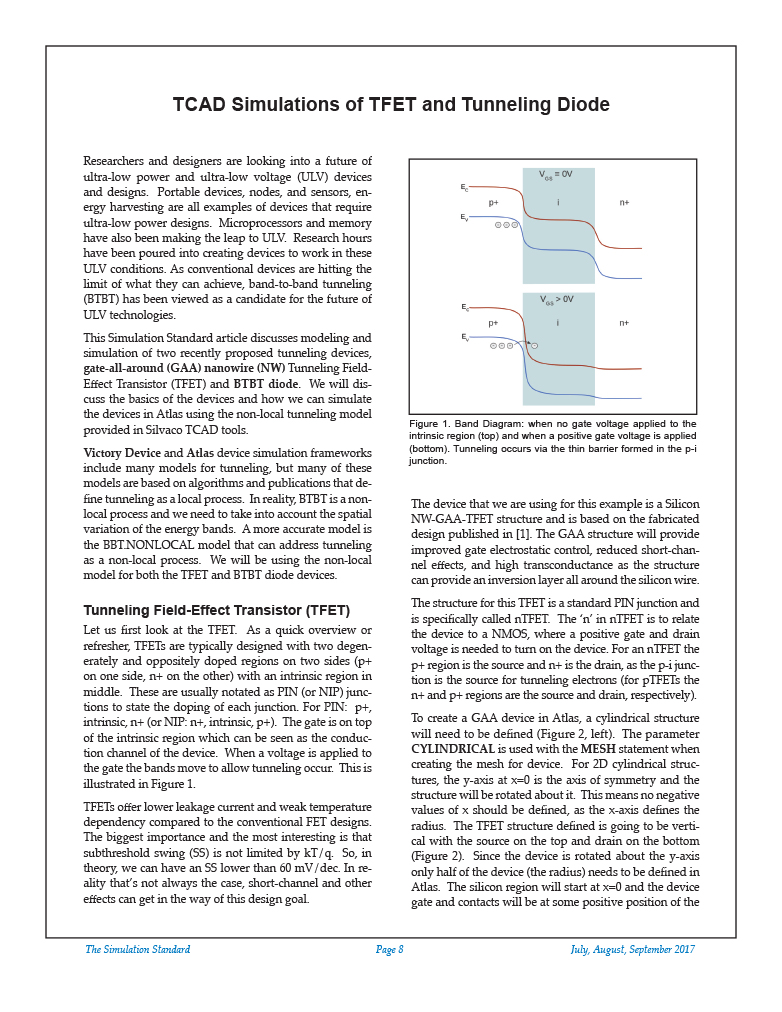
TCAD Simulations of TFET and Tunneling Diode
Researchers and designers are looking into a future of ultra-low power and ultra-low voltage (ULV) devices and designs. Portable devices, nodes, and sensors, energy harvesting are all examples of devices that require ultra-low power designs. Microprocessors and memory have also been making the leap to ULV. Research hours have been poured into creating devices to work in these ULV conditions. As conventional devices are hitting the limit of what they can achieve, band-to-band tunneling (BTBT) has been viewed as a candidate for the future of ULV technologies.
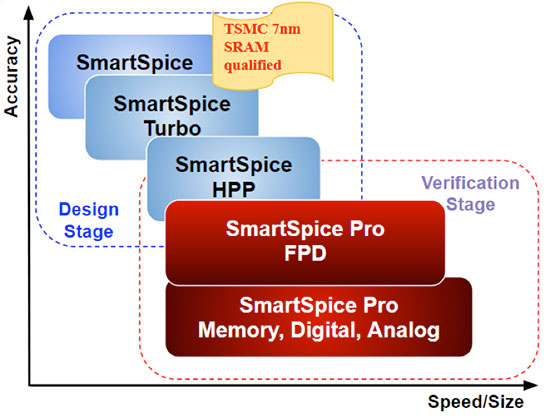
TFT Panel Simulation Using SmartSpice Pro
TFT panels have already gained their undisputable reputation in a variety of professional and commercial applications. High quality, ease of customization, and comparably low manufacturing costs position these panels as an attractive solution offered by standard and custom color display industry. To accomplish the goals set by ever increasing quality standards, TFT panel circuits constantly expand their functionality, add new features. This process naturally leads to an increased complexity of the display systems and, as a consequence, is accompanied by a strong demand for higher operating speeds. Traditionally, implementation of the solutions satisfying these tough requirements in the industry is accompanied by device feature size reduction and by placing more and more elements of the system chips. Modern TFT panel circuits contain millions of active and passive devices and their chip sizes continue to grow with every new generation.
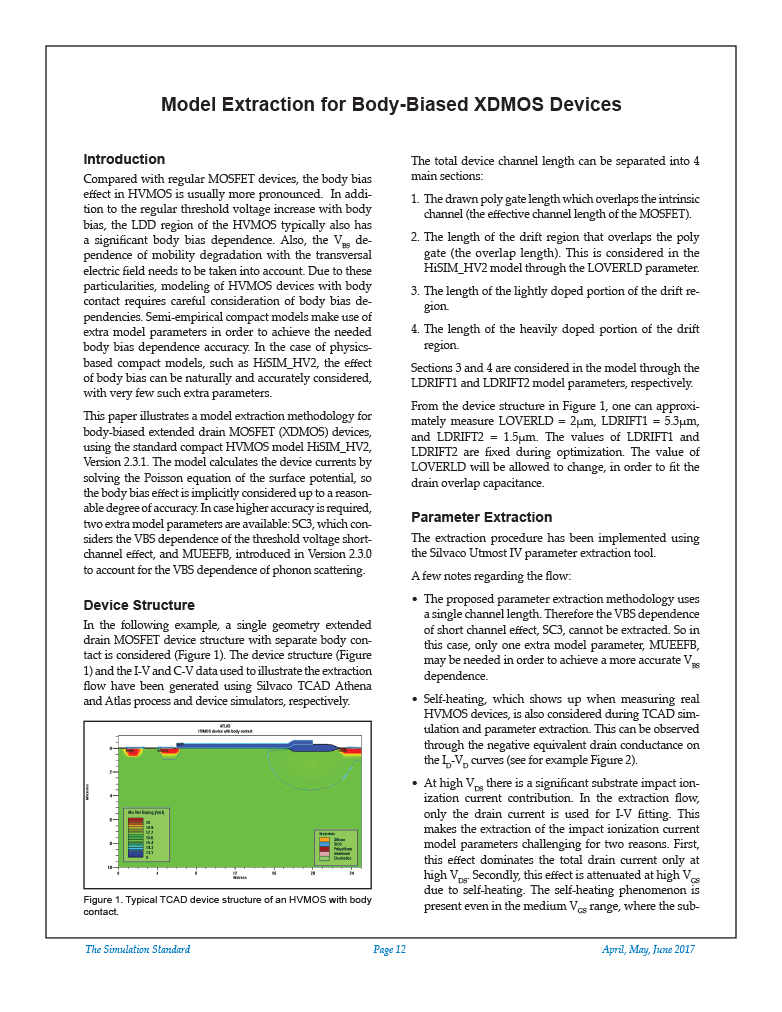
Model Extraction for Body-Biased XDMOS Devices
Compared with regular MOSFET devices, the body bias effect in HVMOS is usually more pronounced. In addition to the regular threshold voltage increase with body bias, the LDD region of the HVMOS typically also has a significant body bias dependence. Also, the VBS dependence of mobility degradation with the transversal electric field needs to be taken into account. Due to these particularities, modeling of HVMOS devices with body contact requires careful consideration of body bias dependencies. Semi-empirical compact models make use of extra model parameters in order to achieve the needed body bias dependence accuracy. In the case of physics-based compact models, such as HiSIM_HV2, the effect of body bias can be naturally and accurately considered, with very few such extra parameters.
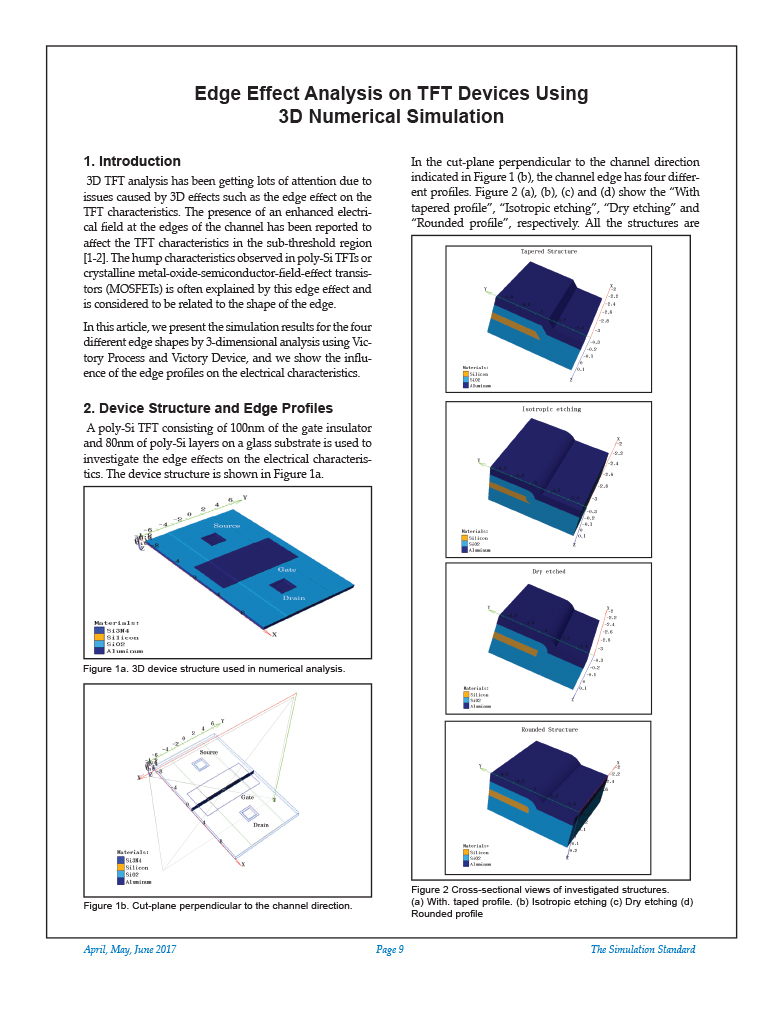
Edge Effect Analysis on TFT Devices Using 3D Numerical Simulation
3D TFT analysis has been getting lots of attention due to issues caused by 3D effects such as the edge effect on the TFT characteristics. The presence of an enhanced electrical field at the edges of the channel has been reported to affect the TFT characteristics in the sub-threshold region [1-2]. The hump characteristics observed in poly-Si TFTs or crystalline metal-oxide-semiconductor-field-effect transistors (MOSFETs) is often explained by this edge effect and is considered to be related to the shape of the edge.

